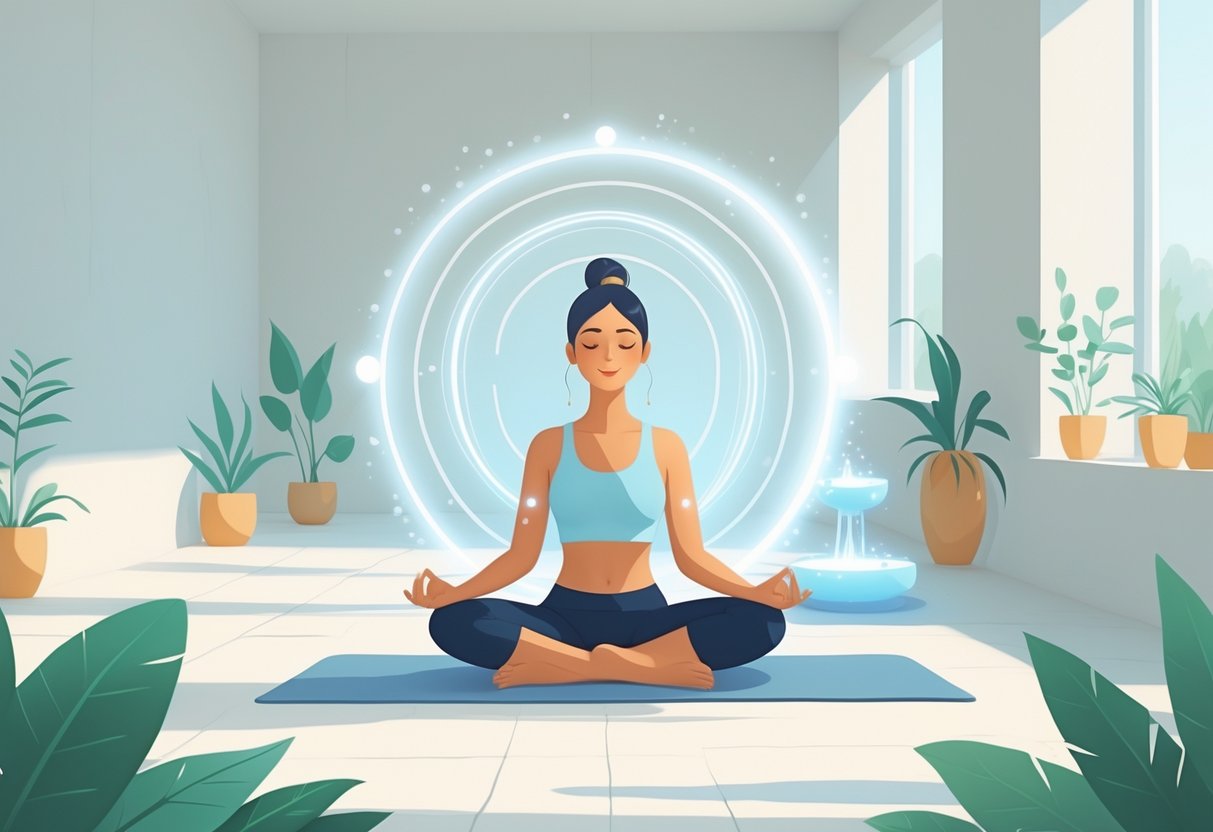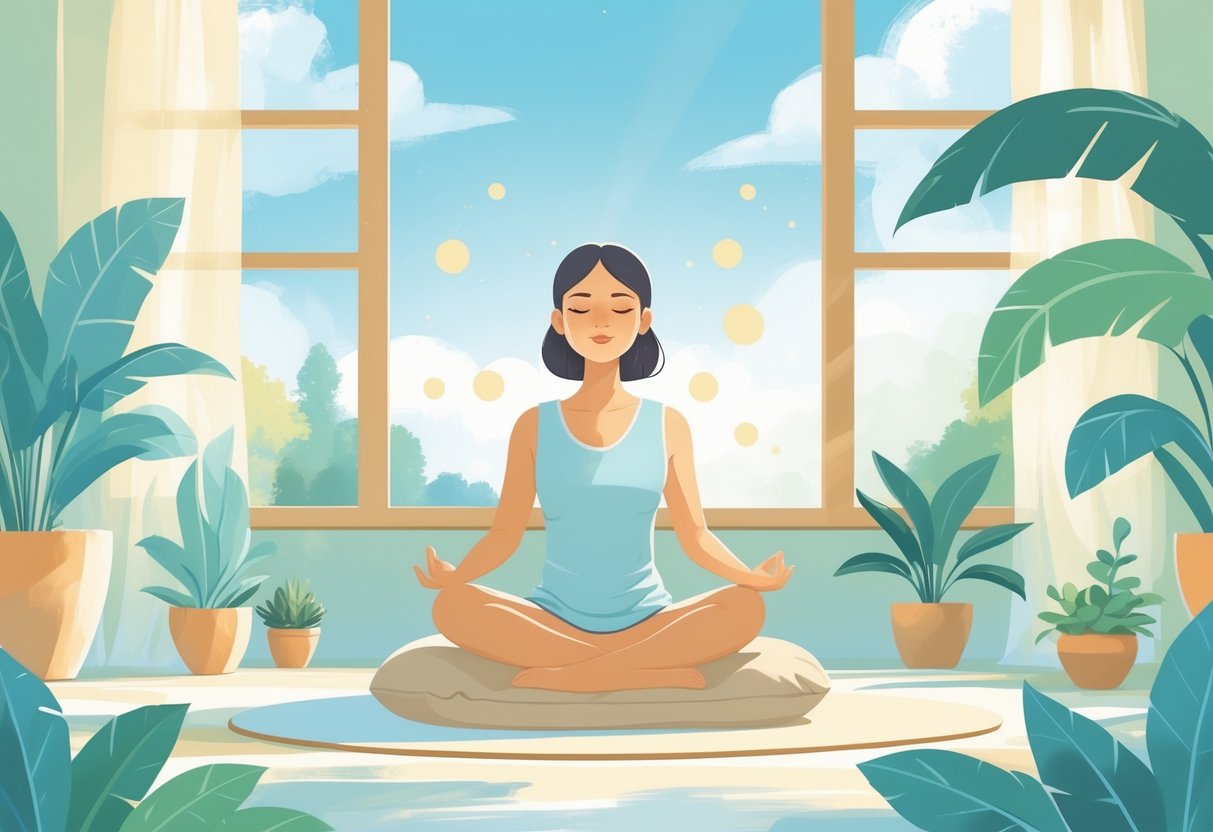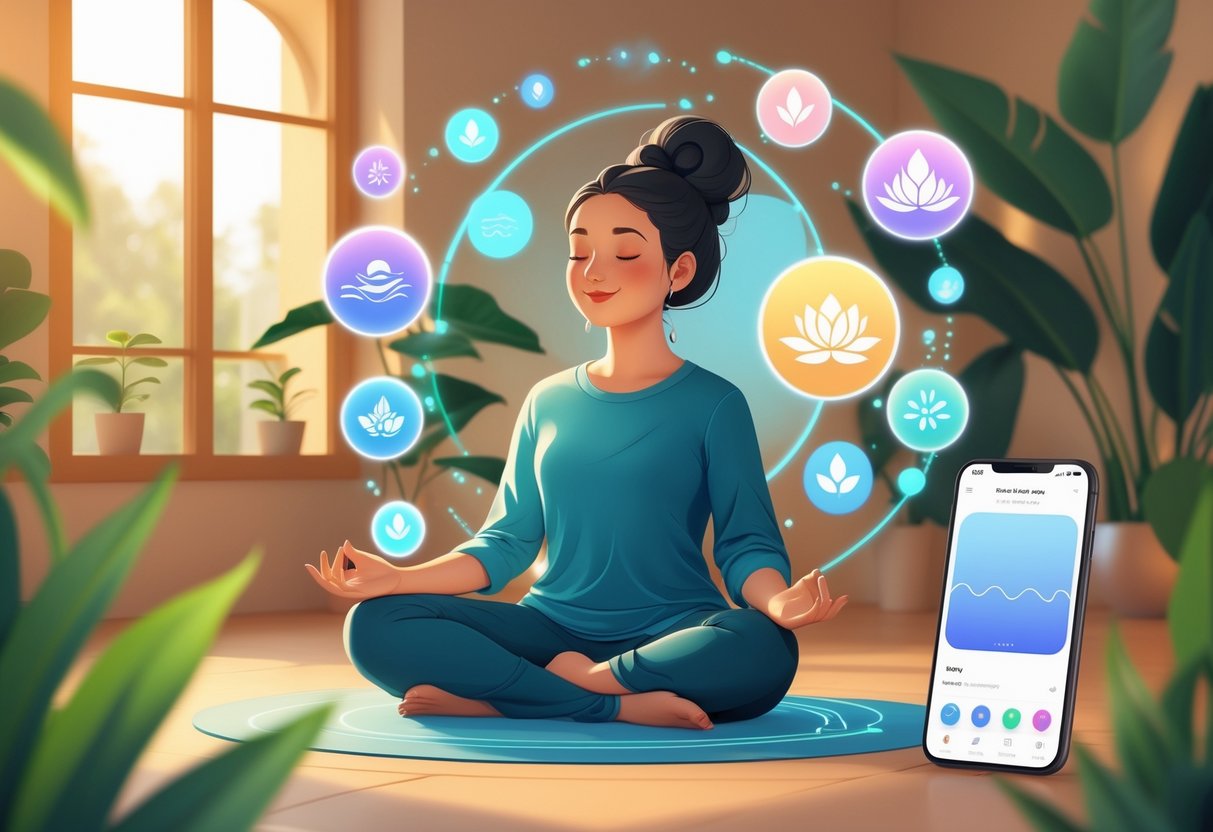Unlock Inner Calm: DIY Guided Meditation Techniques for Stress-Free Living
Mindful Movement and Body Awareness

Mindful movement practices like Tai Chi and walking meditation are distinct approaches that enhance body awareness. They promote relaxation, stress reduction, and a deeper connection to present-moment experiences by focusing on bodily sensations and rhythmic movement.
The Role of Tai Chi and Rhythmic Movement
Tai Chi is a practice rooted in ancient Chinese traditions and involves slow, deliberate movements. It merges gentle rhythmic movement with mindful attention to breathing and posture.
Practitioners often find increased balance, flexibility, and a heightened sense of body awareness. This mindful movement practice enhances bodily sensations, allowing individuals to remain present and attuned to their physical state.
Rhythmic movement, a cornerstone of Tai Chi, plays an essential role. It induces a meditative state, fostering relaxation and stress relief.
Participants focus on the flow of movements, which aligns the mind and body, promoting inner calm. Regular practice can cultivate resilience and emotional stability, offering both mental and physical benefits.
Walking Meditation for Present-Moment Awareness
Walking meditation is an accessible form of mindful movement that focuses on present-moment awareness. Unlike Tai Chi, it involves walking slowly with full attention to each step and sensation.
Practitioners observe the feeling of the ground beneath their feet and the movement of their legs, fostering a connection to the present. This meditation encourages clarity and mindfulness by promoting an awareness of surroundings and one’s body in space.
By concentrating on bodily sensations and rhythmic breathing, individuals develop a deeper understanding of their physical state. As a meditation practice, walking encourages relaxation, stress reduction, and a mindful approach to daily life.
Regular engagement in walking meditation can subtly transform how individuals experience their environment, enhancing both mental clarity and emotional well-being.
Additional Stress-Relief Techniques

Finding effective techniques for reducing stress is crucial for both mental and physical well-being. Two beneficial methods to consider are progressive muscle relaxation and mindful eating, each offering unique ways to alleviate stress and anxiety.
Progressive Muscle Relaxation for Anxiety Relief
Progressive Muscle Relaxation (PMR) is a method designed to reduce anxiety and promote relaxation. This technique involves systematically tensing and relaxing different muscle groups throughout the body.
The purpose of PMR is to help individuals become more aware of physical sensations associated with relaxation, thus achieving a state of calmness and reduced anxiety. This technique can be easily practiced at home.
Start by finding a quiet space and sitting or lying down comfortably. Focus on one muscle group at a time, such as your hands or shoulders, tense them for a few seconds, and then release the tension.
This gradual process encourages awareness of physical sensations and promotes overall relaxation. By practicing PMR regularly, individuals can improve their ability to manage stress and enhance their overall sense of well-being.
Mindful Eating for Better Health
Mindful eating is a practice that focuses on the present moment and encourages individuals to pay attention to their eating habits. This method not only contributes to better health but also serves as an effective stress relief technique.
By savoring each bite and noticing the taste, texture, and aroma of food, mindful eating helps individuals to establish healthier relationships with food. To practice mindful eating, begin by eliminating distractions such as TV or smartphones.
Focus on the food in front of you and take small bites, chewing slowly. Listen to your body’s signals, acknowledging hunger and fullness without judgment.
This approach can lead to reduced anxiety by promoting a sense of awareness and control, ultimately fostering better physical and mental health.
Maximizing the Benefits of Meditation Apps

Meditation apps can significantly enhance wellness by providing convenient access to guided sessions and mindfulness tools. By leveraging popular apps and engaging with community support, individuals can deepen their meditation practice.
Popular Meditation Apps and Mindfulness Tools
Numerous meditation apps like Headspace and Calm offer a variety of guided sessions and mindfulness tools. These platforms provide structured programs that cater to different needs, such as stress reduction, anxiety management, and improved sleep.
Apps often include features like calming music, nature sounds, and visualization exercises. Users can benefit from personalized recommendations based on their preferences and goals.
Additionally, many meditation apps offer instructional content to help users learn and apply mindfulness techniques effectively. For those new to meditation, beginner-friendly introductions can be particularly useful.
Many of these apps integrate closely with daily schedules, offering reminders and progress tracking to reinforce and maintain regular practice. This helps users incorporate mindfulness into their daily lives seamlessly.
Finding Community Support and Guidance
Building a sense of community is vital for enriching the meditation experience. Many apps provide ways to connect with a larger community, offering forums, discussion groups, and live events where users can share experiences and gain insights.
For example, the Indiana University Northwest app includes meditation talks and guided stretching, fostering community support while enhancing self-compassion. Having access to community support can encourage regular practice by motivating and inspiring users through shared experiences and collaborative challenges.
Through interaction with like-minded individuals, users can receive encouragement, advice, and support. This communal aspect is crucial in sustaining interest and achieving long-term benefits in meditation practices.



